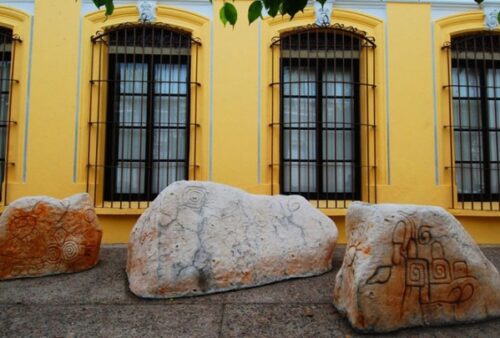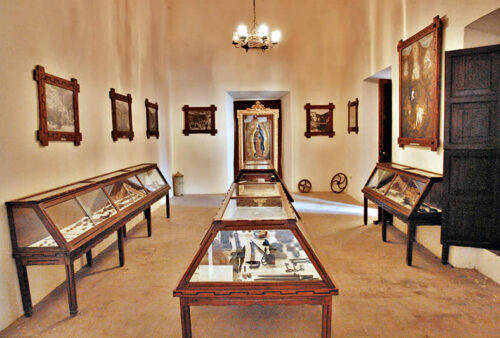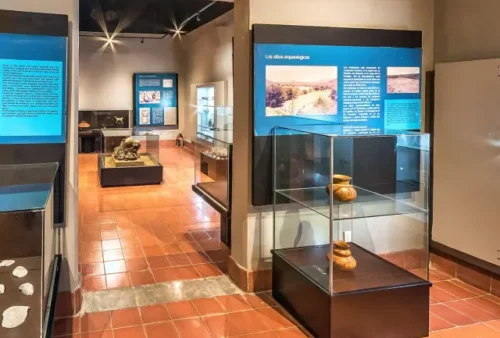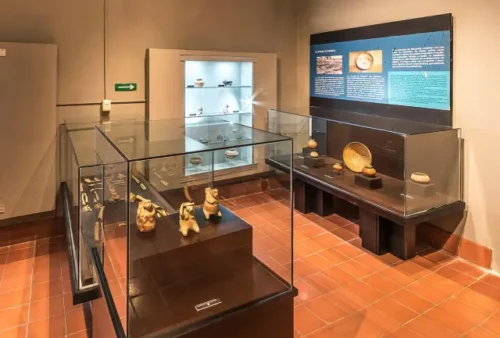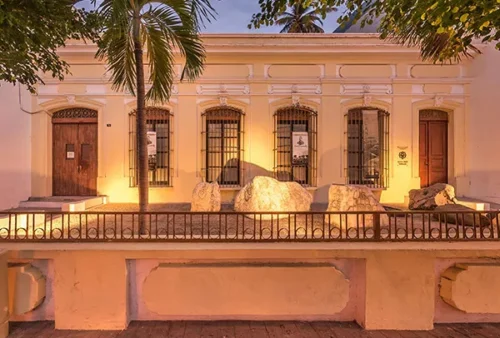Archaeological Museum of Mazatlán
It offers an exhibition of the pre-Hispanic culture of the region. It was inaugurated in 1989 in a late 19th-century mansion, first under the direction of the Government of the State of Sinaloa, and since 1998 under the responsibility of the INAH. Since then, it has been constantly modified to provide better explanations, a richer collection, and greater comfort to its visitors. The museum has a room to present temporary exhibitions of photography, painting, sculpture, and displays of pieces borrowed from other collections, and four permanent rooms where around 300 objects are exhibited, including outstanding ceramic pieces predominantly in red, black, and cream colors; jugs; human clay figures displaying the clothing and ornaments used by the inhabitants of the pre-Hispanic era; spindles and stone axes; clay pipes; and obsidian arrows and knives. Funerary customs and the ballgame known as "ulama" hold a special place; notably, there is a funerary urn with several skeletons symbolizing the return to the womb of Mother Earth, and the Aztatlán codex vessels, finely crafted and likely originating from the territory of present-day Sinaloa, as well as the representation of a warrior or priest in ceramic, prepared for a ritual with shield and horns, as antlers were a symbol of power in pre-Hispanic Mexico. There is also information alluding to the Spanish Conquest in the state.
On its exterior, huge stones engraved with petroglyphs are exhibited.
The historian and journalist from Mazatlán, José C. Valadés, had the initiative to endow the city with a historical and archaeological museum. Current evidence of this is the excellent photographs he took of monuments and important pieces of ancient Sinaloa, such as the "ulamas," and the pieces he bequeathed to the institution, along with the significant donation from the painter Carmen Parra, consisting of pieces related to the shaft graves of Nayarit and Jalisco, the Comala tradition of Colima, the Tarascan Plateau, the coastal plain of Veracruz, and even from Teotihuacán and Tenochtitlan, as well as their area of influence.
In a Porfirian mansion, the museum has been exhibiting temporary plastic arts exhibitions and a large collection of pieces from the pre-Hispanic peoples of Sinaloa since 1989, highlighting the fine ceramics, especially the human clay figures.
In 1966, the Northwestern Archaeological Zone was established, headed by archaeologist Héctor Gálvez C.; the team he directed and coordinated came to study revealing archaeological remains from Sinaloa at sites like Mezcales, Villa Unión, Siqueiros, El Walamo, Chametla, and Escuinapa, and in Nayarit, at sites like San Felipe, Tecuala, las Varas, and Centispac; part of the fruit of these excavations has enriched the museum. Among the valuable pieces obtained from Héctor Gálvez C.'s work is a tripod vessel that seems to represent a character with the face covered with the skin of a sacrificed
Schedules
Tuesday to Sunday from 10:00 AM to 5:00 PM.
📍 Location
Sixto Osuna street No.76, Downtown, 82000 Mazatlán, Sinaloa.


